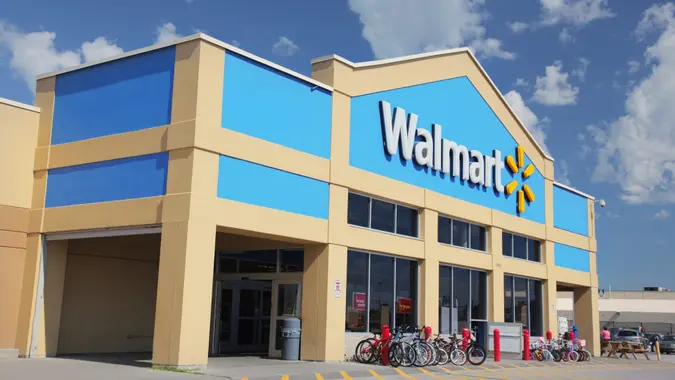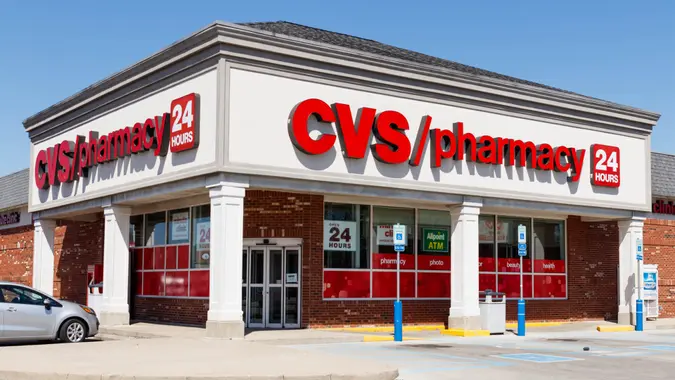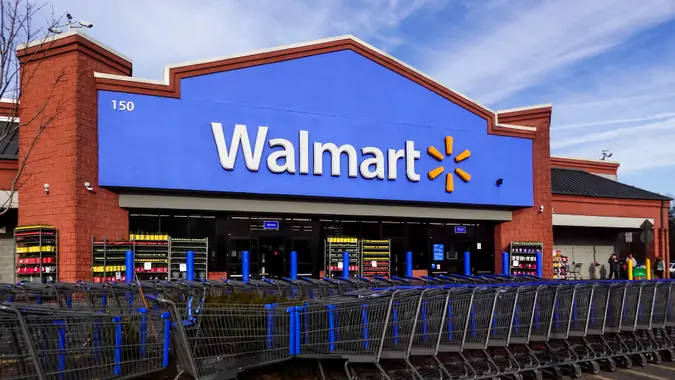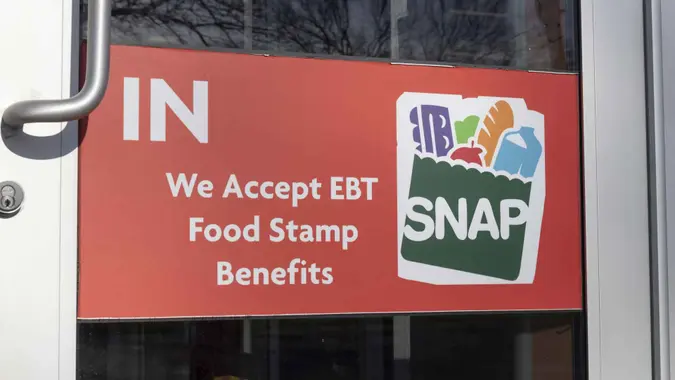6 Possible Changes Coming to Prescription Drug Costs Under Trump’s Presidency

Commitment to Our Readers
GOBankingRates' editorial team is committed to bringing you unbiased reviews and information. We use data-driven methodologies to evaluate financial products and services - our reviews and ratings are not influenced by advertisers. You can read more about our editorial guidelines and our products and services review methodology.

20 Years
Helping You Live Richer

Reviewed
by Experts

Trusted by
Millions of Readers
The majority of Americans think prescription drug costs are unreasonable and believe a major contributor to the high cost is profits made by pharmaceutical companies, a survey by KFF found. Although 65% of adults claim it is easy to pay for prescriptions, those who are on four or more drugs have more problems. As such, Americans want to know what President Donald Trump’s second term might mean for prescription drug costs.
How Middle-Class Earners Are Quietly Becoming Millionaires — and How You Can, Too
“We could see a complete reform of the Medicare/Medicaid system,” said Lindsay Dymowski, president of Centennial Pharmacy Services.
It could be such a massive overhaul of how millions of Americans get and pay for their medications. Negotiation tactics and price transparency are all in the mix, as the pharmaceutical pricing landscape is about to change. Here’s what you need to know about the possible changes to prescription drug costs under Trump.
Next, find out which states are most and least expensive for healthcare.
Medicare Price Negotiation
The fate of Medicare’s drug price negotiation program is unclear. This program for negotiating Medicare drug prices directly with pharmaceutical companies is part of the Inflation Reduction Act. The Biden administration planned to expand negotiations to up to 50 drugs per year, but Trump wants the federal government to handle those negotiations, The New York Times reported. However, among his plans, he supports allowing Medicare to negotiate drug prices under certain circumstances.
Dr. Taher Saifullah, founder of Spine & Pain Institute Los Angeles, said, “Better quantity and quality choices are possible, which often brings prices down, particularly for seniors dependent on multiple prescriptions.”
Price Transparency Regulations
Despite his “deregulation” reputation, Trump’s administration might roll out price transparency regulations. Among other things, these could cause pharmacies to have to reveal wholesaler pricing, bringing more competitive pricing to consumers.
“Pharmacies have difficulty knowing they are obtaining the best prices for medications,” Dymowski explained. “That’s because they have individualized contracts; they have to buy a lot of their inventory from certain suppliers to avoid the higher costs.”
Transparency could lead to lower pharmacy counter prices, but exactly what the effect on the industry will be is unknown.
Rebate System Overhaul
The complex rebate system involving manufacturers, pharmacy benefit managers (PBMs) and health plans may face scrutiny.
Dymowski said, “While rebates lower drug costs for insurers, these savings often don’t reach patients. This is because the health plan receives it after the patient has paid for healthcare, so the patient rarely sees cost savings.”
In his first term, Trump’s administration proposed transferring $29 billion in rebates from PBMs to consumers under Medicare Part D, the Council for Informed Drug Spending Analysis reported. A renewed focus on this area could lead to significant changes in how drug discounts are negotiated and distributed, potentially resulting in more direct savings for patients at the pharmacy counter.
Medicare/Medicaid Reform
Possible changes to prescription drug costs under Trump’s presidency include reconsidering the $2,000 out-of-pocket spending cap, which started in January 2025. Trump may seek to modify or repeal parts of the Inflation Reduction Act, potentially impacting recent drug pricing reforms.
Dymowski said, “Restructuring Medicare to implement a maximum spending limit could create more predictable drug cost patterns for beneficiaries. This potentially improves medication adherence by reducing financial barriers at the point of purchase.”
Expedited FDA Approval Process
Trump’s previous term prioritized expediting FDA approvals for generic drugs, CNN reported, though many of the approved drugs were slow to reach consumers. This focus is likely to continue, potentially leading to faster market entry for generic alternatives to brand-name medications. The administration may also push for regulatory changes to make generics more widely available.
Dymowski explained, “Trump was very pro expediting the FDA approval process in his last term. I can see there being regulatory changes where new drugs can be expedited, and generics can become more widely available for branded medications.”
This could result in increased competition in the pharmaceutical market, potentially driving down prices for consumers.
International Trade Policies
While specific plans are unclear, Trump’s approach to international trade could impact drug importation and pricing. The president’s plan for high tariffs on all imported goods would likely include imported medications or raw materials used in drug production. NBC reported, “Very few generic drugs are actually made in the U.S.” This could result in higher prices.
If American companies begin producing medications in the U.S. and are able to source the ingredients they need domestically, however, prices could decrease.
“President Trump is not afraid to utilize tariffs and duties, so there may be an opportunity to adjust tariffs on imported medications,” Dymowski said. “That could be more pro-American companies and save costs for the American patient.”
Dr. Saifullah added, “If the government allows drug imports from Canada or other countries where medications are cheaper, it could reduce the price burden on American consumers. However, safety and quality concerns may arise, so any changes in this area must balance cost savings with medication quality.”
 Written by
Written by  Edited by
Edited by 

























